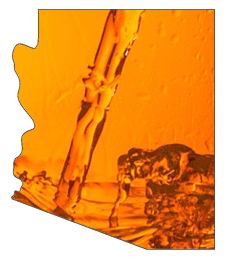 Time to look at the big picture. We’ve already mentioned the 300 Arizona drunk drivers who were arrested on the first two days of the Labor Day weekend. Now the totals are in.
Time to look at the big picture. We’ve already mentioned the 300 Arizona drunk drivers who were arrested on the first two days of the Labor Day weekend. Now the totals are in.
Bad news: Arizona police picked up 450 motorists for impaired driving this Labor Day weekend
Good news: that’s 20 percent fewer than last year
There was some other data, not all of it encouraging. The average blood alcohol concentration (BAC) of arrested persons was up. This year it was .153, almost twice the legal limit of .08. Last year the average was .145.
Related to this was the type of offenders. There were fewer extreme DUIs (BAC over 1.5) in general, and fewer DUIs overall, but a greater percentage of the arrests were repeat offenders.
What do we learn about Arizona’s Labor Day drunk driving from this?
Arizona’s Doing it Right
We can assume that the measures Arizona has taken to stem drunk drivers are working for the general populace. Educational efforts are bearing fruit: more motorists are designating sober drivers, calling taxis or using rideshare services.
But it’s more than just education – legislation has been key. Mothers Against Drunk Driving (MADD) has given Arizona its highest rating: five stars. That means that all of the measures MADD recommends are in place:
- Ignition interlocks – devices which prevent a vehicle from starting if the driver has been drinking. These are mandatory for all drunk driving offenses
- Sobriety checkpoints
- ALR (Administrative License Revocation) – licenses of all DUI offenders are suspended upon arrest, not conviction.
- Child endangerment laws – increased penalties for driving impaired with a child in the vehicle
- No refusal – by law drivers may not refuse a sobriety test
With so much going for Arizona, why is there a slight increase in repeat offenders?
Perhaps it’s an anomaly. But it’s also worth noting that persistent DUI offenders are a special case. People with long-standing alcohol problems and other behavioral issues require a lot more than an Uber account to keep from endangering themselves and others. The ready availability of alcohol at Labor Day gatherings could make it easier to get drunk, the decision to drive afterwards being an unfortunate consequence.
The repeat offenders might also account for the higher BAC, as casual drinkers are being more careful not to drive.
If Arizona wants to address repeat offenders, a combination of supervision, treatment, and an ignition interlock –a program called a sobriety or DUI court – is probably the next step. It’s worked brilliantly in Michigan, and the model is a good one for every state to adopt.
The news, then is generally good. It’s a testament to Arizona’s commitment to making the state’s roads safer by reducing the number of drunk drivers on the road. We hope these numbers keep falling during the year as well, leaving the state with more resources to put toward the problem of repeat offenders.
Good job, Arizona.
